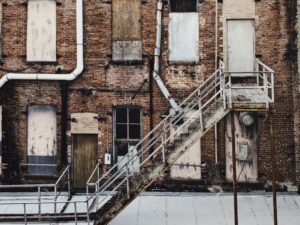Why You Should Consider Adaptive Reuse for Your Commercial Property

Adaptive reuse is the process of reusing an old property site or building for a purpose other than the use it was originally built or designed to accommodate. At Commercial Asset Preservation (CAP), we are experienced in preserving commercial properties so that adaptive reuse can occur at properties anywhere in the U.S. and Canada. Learn our top tips for determining if your property is a good candidate for an adaptive reuse project.
Reasons to Consider Adaptive Reuse
While creating a new revenue stream from a vacant building is often the primary reason behind adaptive reuse, landlords can realize so much more. The property owner stands to gain community goodwill, improved market perception, tax credits, and re-utilization of existing property and materials when repurposing a vacant commercial building. Adaptive reuse does not need to be permanent, another consideration can be to provide temporary re-utilization of your building. One example of temporary use is a seasonal pop-up store, which can generate revenue at an otherwise vacant structure. A second temporary use is applicable to larger spaces where the building can function as a staging or care area during the time of a natural disaster.
Tax Credits with Adaptive Reuse
When adaptive reuse projects involve historic buildings, developers can often look to tap into a federal tax incentive program known as the historic rehabilitation tax credit. This program generates a credit that directly reduces taxes rather than offering a tax deduction such as depreciation, which reduces taxable income. The credit is intended for income-producing properties and is flexible: for example, if a property originally was used as a hotel, it can find new life as an office building or multifamily project. More information on the historic tax credit can be found in this article.
How to Determine if Adaptive Reuse is Best for Your Property
Adaptive reuse is a consideration when the concept or retailer in your property is no longer viable or able to draw a crowd. If the building is a former big box store consider subdividing the building to bring in several new tenants. Adaptive reuse involves seeking tenants outside of the traditional retail marketplace such as: schools, hospitals, medical centers, community centers, municipal buildings, call centers, entertainment venues and more. Work with local leaders, brokers, and consultants to get a flavor of what might be missing in the area that you can fulfill through adaptive reuse. Nearly any type of reuse option beats a vacant building if build out costs can be controlled.
Where Should Adaptive Reuse be Employed
Site location is a primary factor to consider when determining if your property is a good candidate for adaptive reuse. Those buildings which are located in a city center and were once a high traffic location are the most likely candidates for adaptive reuse as these structures catch the attention of municipal officials who desire to have vibrant buildings in the core of their community. Typically, these buildings have deteriorated a bit, but they may have unique physical characteristics and perhaps historic architecture which make the building worth remodeling. A great example of this is Ghiradelli Square in San Francisco. In 1964, the old chocolate factory became the first successful adaptive reuse project, as the property was converted into a specialty retail and dining complex.
It is essential to choose a team that you can trust to protect your property and leave it in a condition where adaptive reuse is a good investment.
Potential Issues in Adaptive Reuse Projects
Cost and building codes are two of the biggest challenges when converting an old building to a new use. It is essential for your buildings to be accessible and safe, which can be a big hurdle to overcome when working with older buildings. Often times, the building’s electrical, plumbing, and HVAC systems need to be gutted and replaced entirely in order to meet current safety and environmental standards. Complying with ADA standards may necessitate additional expense. Other important considerations are the credit quality of the new tenant and the potential liability of the business that tenant will be operating in the repurposed space.
Why You Should Choose CAP for Your Adaptive Reuse Project
CAP is experienced in giving vacant properties new life and has worked on preserving properties for adaptive reuse projects across the country. Throughout our years in business, we have seen the good, the bad and the ugly. CAP feels confident in saying that it has experienced nearly every conceivable scenario of what can happen to a building. We use our experience and extensive contractor resources to provide clients with a cost-effective solution that places their property in a condition that meets the needs of the client and the municipality while retaining property value and making the building ready for its next life. Considering adaptive reuse for your property? Contact CAP at (801) 461-8250 or inquiries@commercialpreservation.com.
